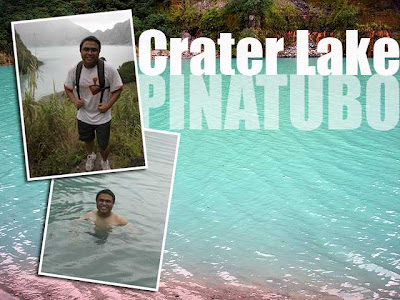 1. Mt. Pulag, the rooftop of Luzon
1. Mt. Pulag, the rooftop of LuzonI could not imagine myself 2,922 meters above sea level at the summit of Mount Pulag. But I was there! It took a lot of effort on my part but the view from the top was surreal and most definitely worth it. Is Mt. Apo next?
 2. Adopting a sea turtle at the Pawikan Conservation Center
2. Adopting a sea turtle at the Pawikan Conservation Center We visited the Pawikan Conservation Center early this year to adopt sea turtles. You can include it as part of any Subic itinerary. And this is a great help to efforts to protect the pawikan.
 3. Journey across the Ifugao heartland
3. Journey across the Ifugao heartlandI was very lucky to join a rice harvest tour to Mayoyao, Ifugao this year which took me through the very core of Ifugao. It was a very enriching experience and it opened my eyes to the culture of our Ifugao brothers. I look forward to joing their planting rice tour this January. I made five entries about this great trip!
 4. Trekking and 4x4 to Mt. Pinatubo
4. Trekking and 4x4 to Mt. PinatuboThe crater lake of Mount Pinatubo is perfect for a swim especially when it is baby blue! It's easy to organize a visit through the Pinatubo Spa Town and when you get back, a sumptuous lunch and massage awaits.
 5. Batanes, undiscovered paradise up north
5. Batanes, undiscovered paradise up northBatanes is pristine and refreshing. It's a must in any traveler's list of places to visit in the Philippines. I'll be blogging about my trip soon.
 6. Intro dive at Dive and Trek in Bauan, Batangas
6. Intro dive at Dive and Trek in Bauan, BatangasEven if you don't have a license, you can still experience diving with the help of a dive master through an intro dive. And that's exactly what we did in Bauan, Batangas!
 7. Ipo Watershed, Angat Dam and the La Mesa Ecopark
7. Ipo Watershed, Angat Dam and the La Mesa EcoparkAny advocacy to preserve our cultural and natural heritage is close to my heart. Which is why we made a visit to the Ipo Watershed to support the advocacy of the UP Mountaineers to protect it.
 8. Romblon, Romblon is a heritage town
8. Romblon, Romblon is a heritage town Talk about the road less-traveled! Romblon was indeed a surprise. It was fun exploring the old town of Romblon since its heritage is unbelievably intact. I hope to visit again soon.
 9. Anawangin Cove in San Antonio, Zambales
9. Anawangin Cove in San Antonio, ZambalesAnother unbelievable beach destination so close to Manila, I most definitely enjoyed the surreal landscape of this Zambales beach. So remote it is that you need to hike several hours or take a pump boat to get to it.
 10. Tawi-Tawi, overnight in Bongao
10. Tawi-Tawi, overnight in BongaoIn one month, I was able to visit the northernmost and southernmost provinces of the Philippines. Despite my short stay, the fact that I was able to set foot in Tawi-Tawi is worth mentioning. And I'm definitely making another trip to explore more!
Read also Top Philippine destinations for 2009.














































